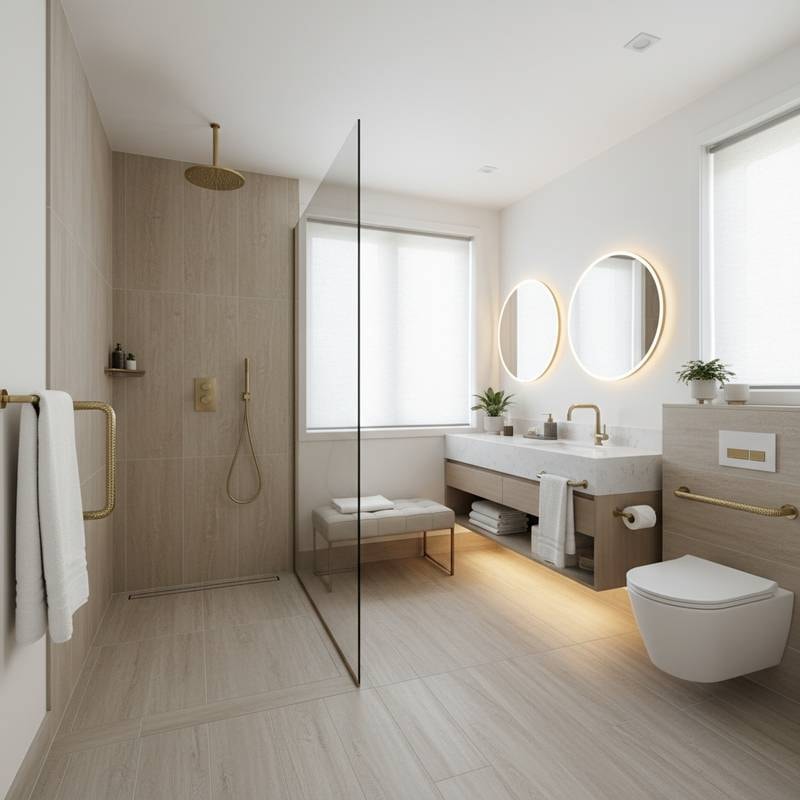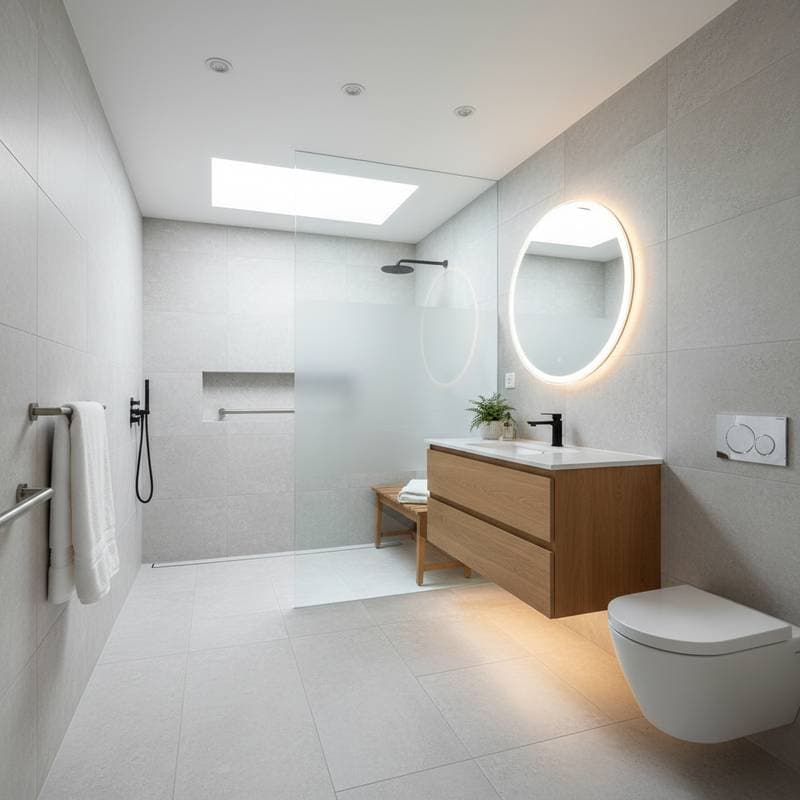Universal Design Trends for Age-Friendly Bathrooms in 2025
Creating a bathroom that serves individuals across all life stages requires thoughtful planning. Universal design principles ensure functionality without sacrificing aesthetics. These 2025 trends offer practical solutions for remodeling, supporting aging in place, or adapting for family members with varying mobility needs. The following sections outline key elements that balance accessibility, elegance, and budget considerations.
Integrating Multi-Height Elements for Versatility
Modern bathrooms incorporate multi-height designs to accommodate diverse users, including those seated or using wheelchairs. Install vanities at varying levels, such as 30 inches for children and 34 inches for adults, to promote ease of use. Opt for floating vanities that provide knee clearance while maintaining a contemporary appearance.
Incorporate soft-close drawers and touch-latch hardware to reduce effort during daily tasks. These features enhance navigation and organization. Such adaptations transform the space into a versatile environment suitable for all household members.
Installing Zero-Threshold Showers for Seamless Access
Zero-threshold showers remove entry barriers, allowing smooth transitions from the floor to the shower area. This design minimizes fall risks and simplifies cleaning. Prefabricated shower pans integrate flush with existing tiles, making them ideal for budget renovations.
For mid-range projects, select custom-tiled showers with linear drains to manage water flow efficiently. Include a fold-down teak bench and a handheld showerhead on a slide bar for added support. These elements ensure the shower accommodates users of all ages and abilities.
Layering Lighting for Safety and Ambiance
Effective lighting enhances both safety and visual appeal in bathrooms. Implement layered systems with indirect under-vanity lights for low-light navigation and adjustable task lights near mirrors for precise illumination. Motion-sensing fixtures activate automatically, preventing disorientation in dim conditions.
Budget options include plug-in motion lights under cabinets, which install easily and improve energy efficiency. Advanced systems adjust color temperatures to support natural circadian rhythms. These solutions create a comfortable atmosphere while prioritizing user safety.
Selecting Stylish Grab Bars for Support
Contemporary grab bars integrate seamlessly into bathroom decor, available in finishes like matte black or brushed gold. Choose models that function as shelves or towel holders to maximize utility. Reinforce walls with blocking during initial construction to allow future installations without major disruptions.
Retrofit options secure directly into existing tiles using reinforced anchors. Position bars near toilets, showers, and vanities at standard heights of 33 to 36 inches for optimal support. This proactive approach ensures long-term adaptability.
Choosing Comfort-Height Fixtures and Advanced Toilets
Comfort-height toilets, elevated to 17 to 19 inches, facilitate easier standing and sitting. Select modern designs, including wall-mounted or compact models, to match various aesthetics. These fixtures represent a standard in universal design for enhanced comfort.
Incorporate bidet attachments for hygiene and convenience, featuring heated seats and touchless flushing. Install these on existing toilets in under an hour for a cost-effective upgrade. Such technologies assist users with mobility challenges or joint discomfort.
Opting for Slip-Resistant Flooring Solutions
Prioritize flooring that combines durability with traction to prevent slips. Textured porcelain tiles or luxury vinyl planks mimic natural stone or wood while providing reliable grip. These materials suit both luxury and economical renovations.
Consider radiant floor heating to promote faster drying and added warmth, further reducing moisture-related hazards. For simple enhancements, place rubber-backed mats with beveled edges near wet areas. These additions deliver immediate safety benefits without extensive changes.
Designing Accessible Storage Configurations
Focus on storage that promotes reachability and organization. Use pull-out drawers, open shelving, and modular dividers in vanities to keep items accessible. Adjustable inserts allow customization for different needs over time.
Incorporate wall niches in showers to store essentials at waist height, avoiding unnecessary bending. Tension-mounted shelves offer a renter-friendly alternative, requiring no permanent alterations. These strategies simplify maintenance and daily use.
Regulating Temperature for User Comfort
Lever-style faucet handles and thermostatic valves provide precise control, benefiting those with limited dexterity. These prevent scalding and ensure consistent water temperatures. Install them during remodeling for straightforward safety improvements.
Heated towel racks maintain dry linens and control humidity, contributing to a spa-like experience. Plug-in versions suit smaller budgets and eliminate wiring needs. Together, these features enhance overall comfort.
Blending Inclusivity with Sophisticated Aesthetics
Universal design now aligns closely with luxury elements, using brushed metals, neutral palettes, and organic textures. Large-format tiles with minimal grout lines ease cleaning and upkeep. This combination yields timeless, soothing spaces.
Select materials that withstand wear while supporting accessibility. The result is a bathroom that feels premium yet functions inclusively for everyone.
Adapting Designs for Long-Term Use
A well-designed age-friendly bathroom evolves with changing needs. Choose modular accessories and upgradable fixtures to maintain flexibility. Preserve open floor space to support mobility aids if required.
This approach benefits multigenerational households, ensuring safety and enjoyment for all. Implement these trends by combining cost-effective and premium options tailored to your space. The outcome is a functional, elegant retreat that endures.










